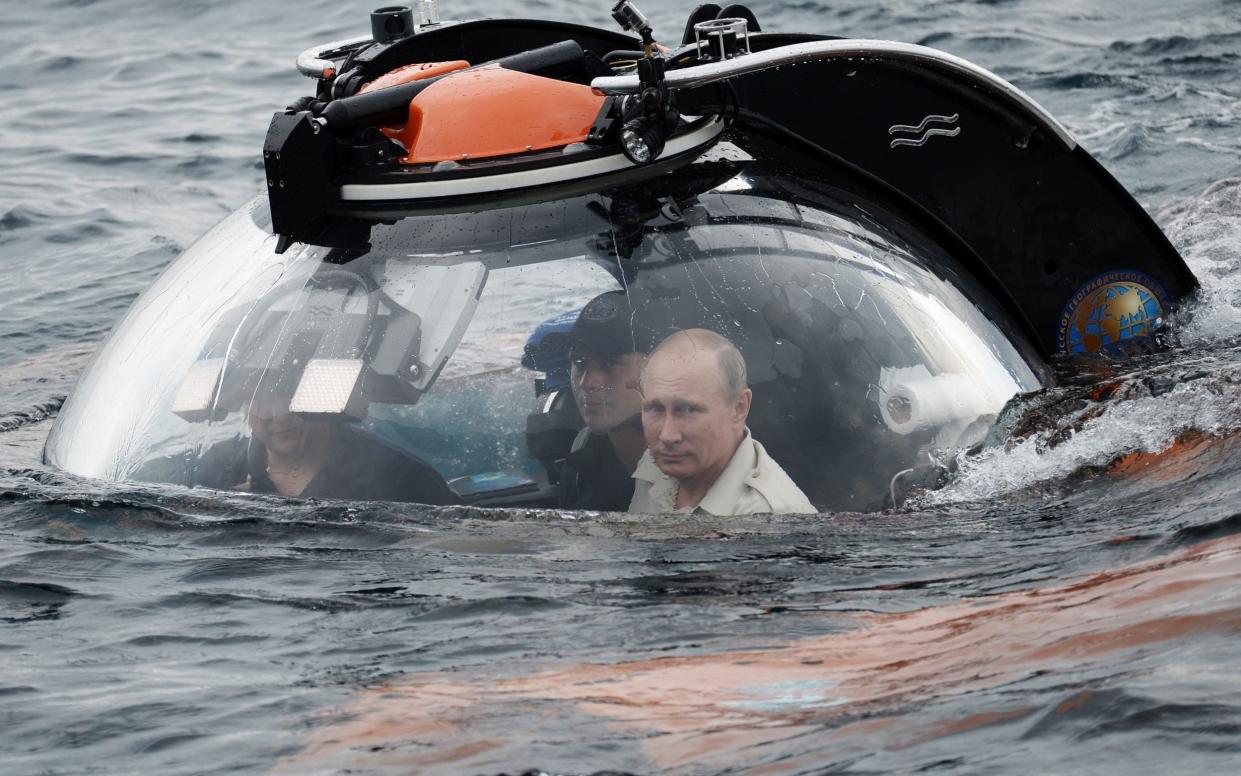Nord Stream sabotage mapped: How Putin could have carried out the attack

- Oops!Something went wrong.Please try again later.
Three offshore lines of the Nord Stream pipeline system supplying Germany with Russian gas suffered “unprecedented” damage on Monday.
Gas pipe leaks at sea are rare. Three at the same time strongly suggests sabotage. How might that be achieved?
With a depth of only around 70m, covert entry into the Baltic Sea by nuclear submarine is very difficult if not impossible.
Divers can operate at such depths, although the currents may be tricky, and any supporting vessel, be it a submarine or surface vessel, would likely have been spotted, given the density of traffic in the area.
The water column - the mix of fresh and salt water - would also make it difficult for a submarine to maintain the right buoyancy for such a mission. Messing around with divers and explosives in such conditions would be an extremely risky venture.
Russian submarines are very well practiced at this sort of thing, though, having honed their skills over decades "investigating" the undersea internet cables running across the north Atlantic.
The old Soviet Union’s submarine force was highly regarded by Western naval chiefs for its ability to operate specially designed seabed engineering assets during the Cold War.
For all Moscow’s military humiliation in Ukraine, today’s Russian submarine fleet has been modernised and is considered a potent force once more.
That is one of the reasons Ben Wallace, the Defence Secretary, has ordered naval chiefs to conduct a review to see whether Britain has the right balance of surface and sub-surface capabilities.
The Russian spy submarine Belgorod, a modified OSCAR III-class boat operated by GUGI (the Main Directorate of Deep Sea Research), is thought capable of interfering with undersea communications. If cables, why not also pipelines?
It is questionable though, whether Putin would risk using his submarine force on a job like this, with all the diplomatic ramifications if it went wrong.
So, autonomous underwater vehicles? Submarine drones carrying explosives?
Possible, but they would have had to come from a host ship somewhere and, as stated above, the area is quite shallow and well traversed; somebody would have seen something. Plus, of course, the possibility of an underwater drone dropping an explosive charge in the wrong place would have been ever attendant.
A mystery unravelled
So, a (not so) deep-sea mystery, never to be solved? Perhaps not.
If we assume a bomb of some sort was used, the explosive charge would not have had to be very large - pipes are not armoured, after all, and are just a few centimetres thick. Similarly, the explosion would not have had to be directly on top of the pipe; blasts are magnified underwater and for the same amount of charge, a much bigger effect can be achieved below the waves than on the beach.
Modern sea mines come in many forms. Some can be deployed to an area and pre-programmed with the acoustic signature of potential targets.
Picture a torpedo-shaped mine "floating" nose up, listening to the propellers of ships passing overhead.
One shaft and seven blades? That’s a Destroyer; not interested, thinks the mine. Two shafts each with seven blades? That’s an aircraft carrier, time to go bang.
The benefit of pre-placing such mines is that the operation can be carried out when the world’s attention is elsewhere and possibly months before any detonation might be called for.
Similarly, if the waters were too choppy, literally or diplomatically, when the mission to place the explosives was planned, the team could just come back a week later.
A device small enough to punch a hole in a thin metal pipe need not be that big. It could have been dropped months ago by a Russian Kilo-class hunter-killer submarine (risky), a St Petersburg-registered fishing vessel (suspicious) or a passing oligarch's yacht.

Three small devices, 70m under the water, close to the pipelines could have been left months ago, perhaps when the world was looking at the Zaporizhzhia nuclear power plant or the atrocities uncovered in Bucha. Perhaps the mission crept under our attention as we watched the Winter Olympics in China?
They may have been sitting there for months, listening for the pre-programmed acoustic signature of a "friendly" vessel transiting close by (but far enough from any blast).
Perhaps they were listening for a signal transmitted by an electronic device dropped from an aircraft passing overhead?
The Russian navy is known to take great interest in undersea infrastructure, usually for the purposes of tapping internet cables. It is highly likely Western navies visit the same areas afterwards, to see if any "surprises" have been left behind.
Was this location chosen as the "fault line" between two nations? Who should have been responsible for checking the Nord Stream pipes for any unwanted barnacles?
Has the Russian undersea fleet shown, once again, what a capable and potent force it is?

